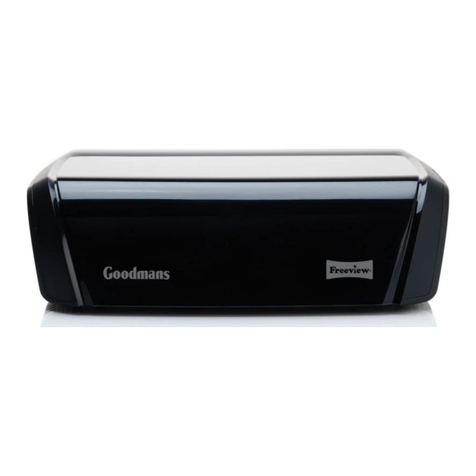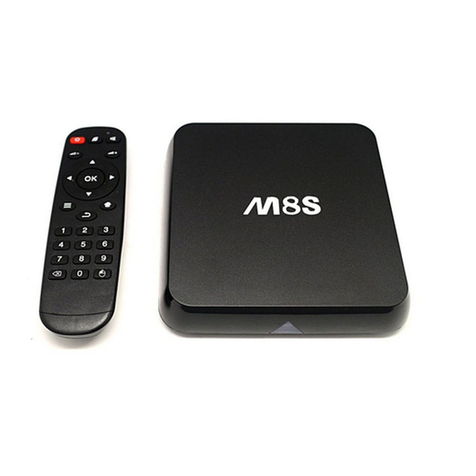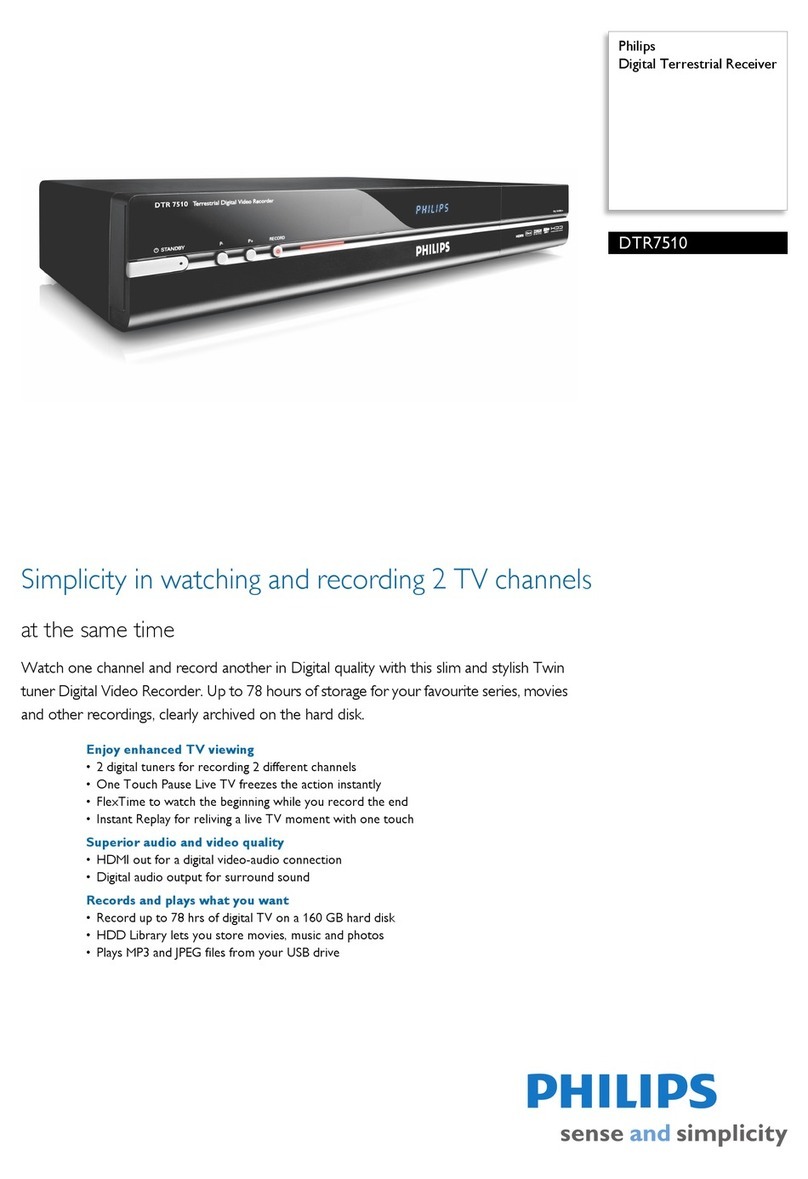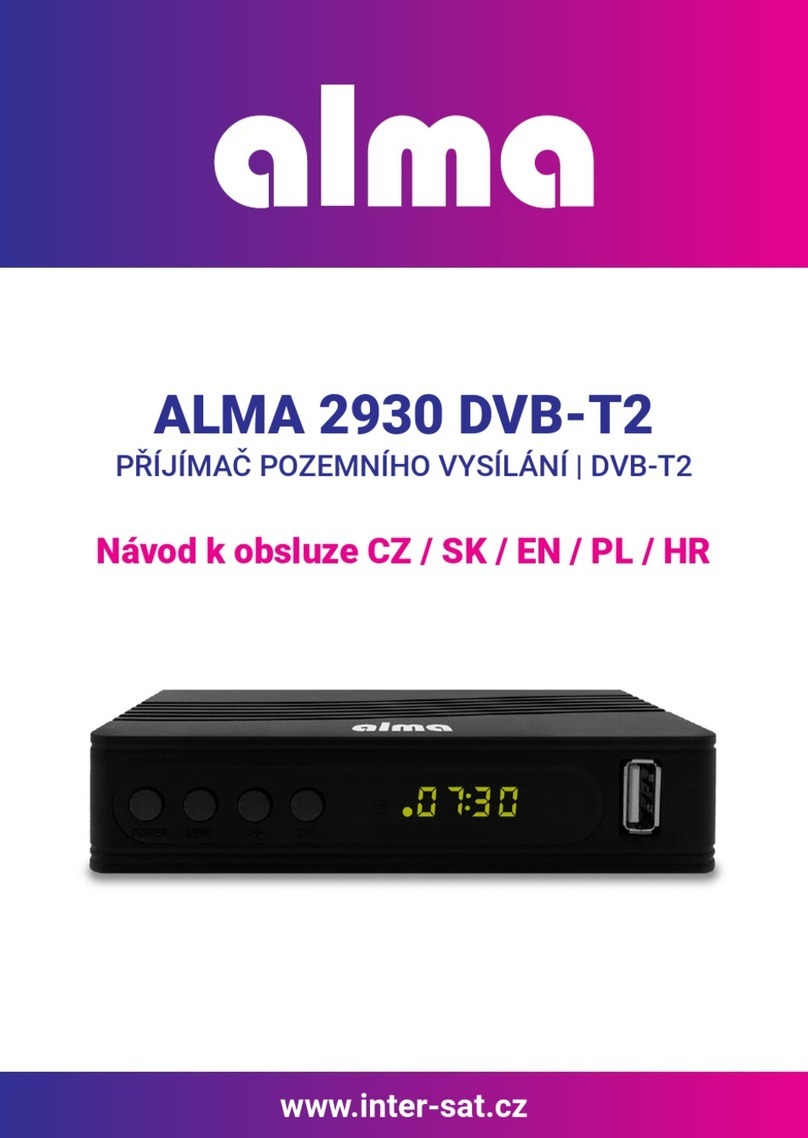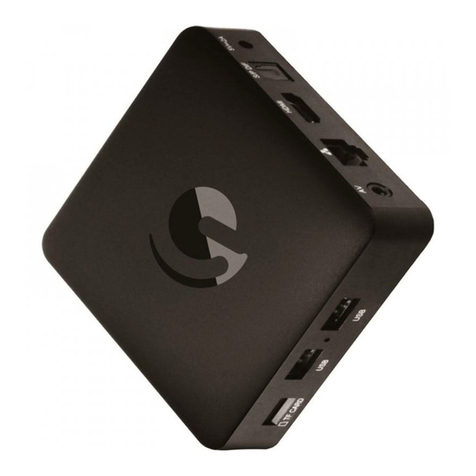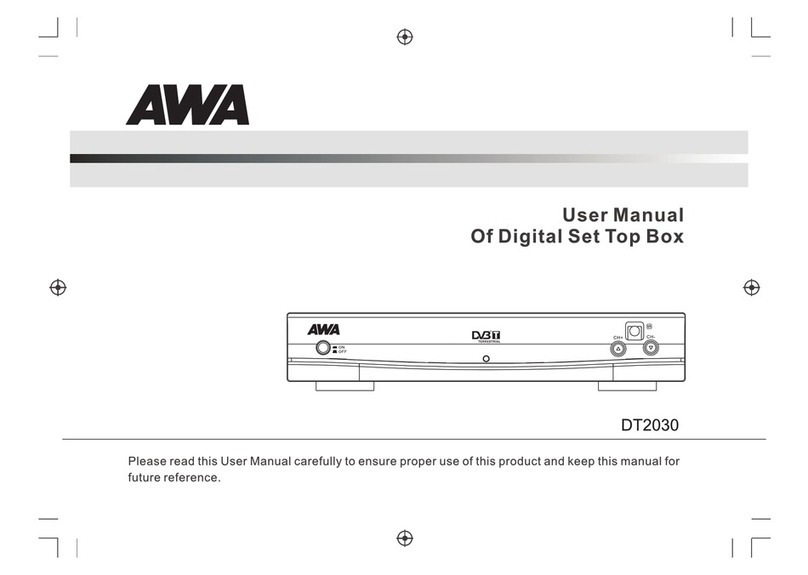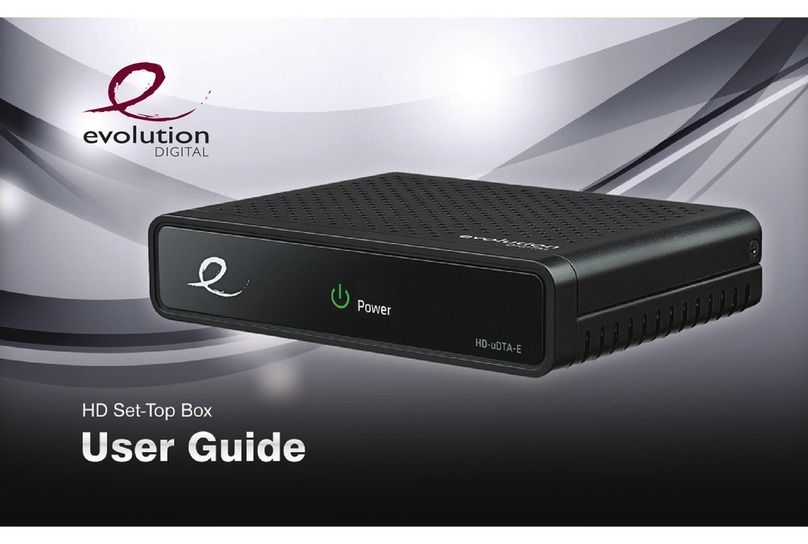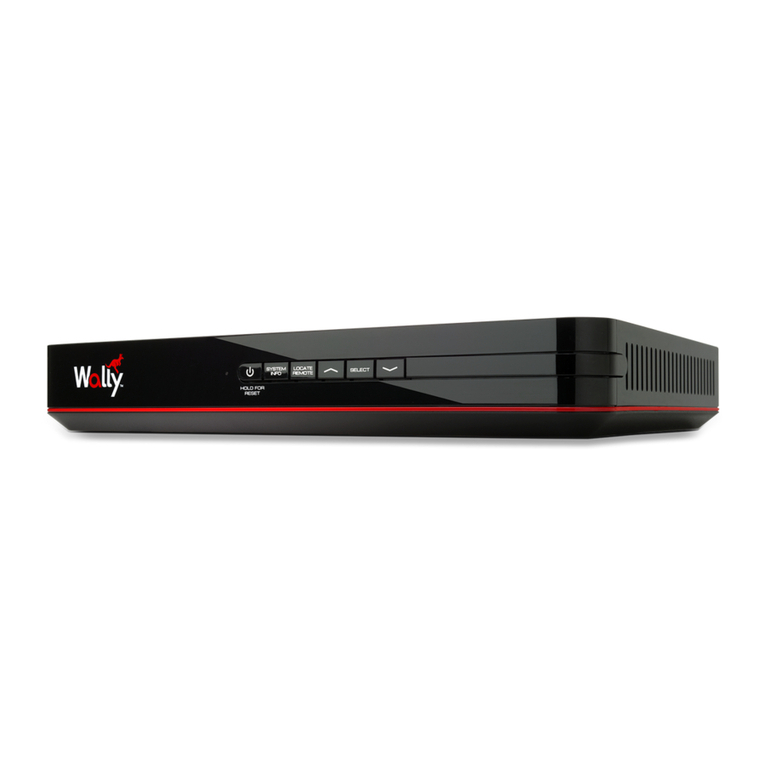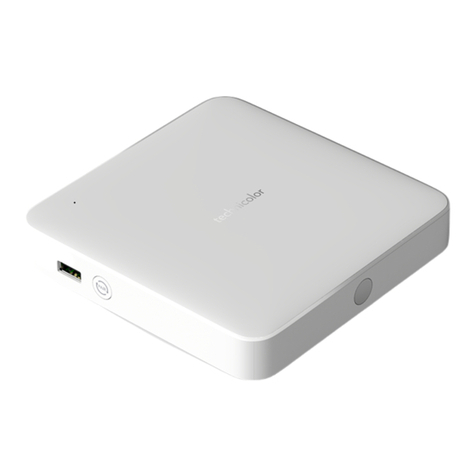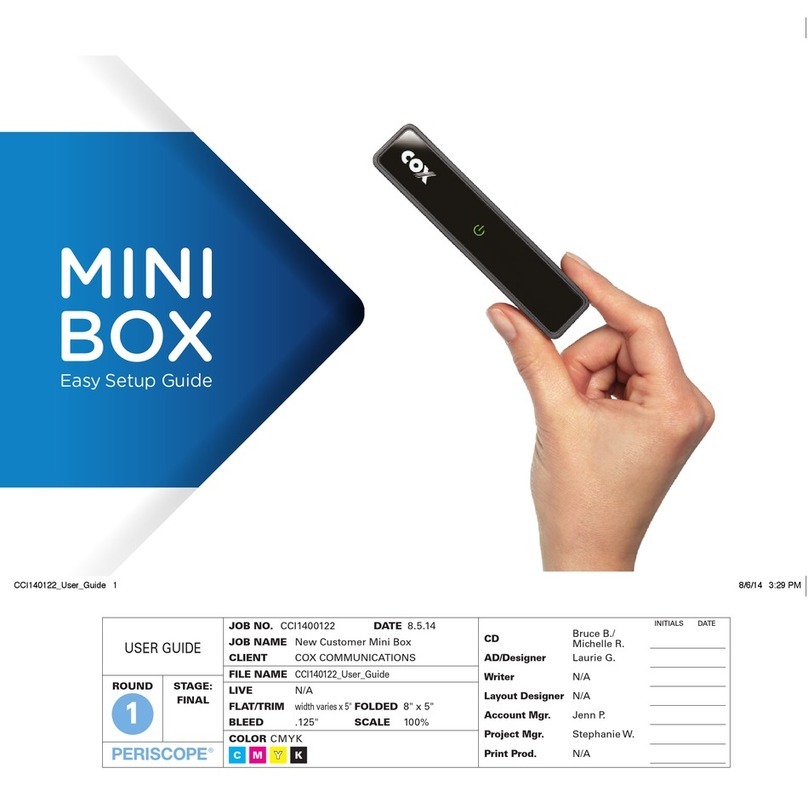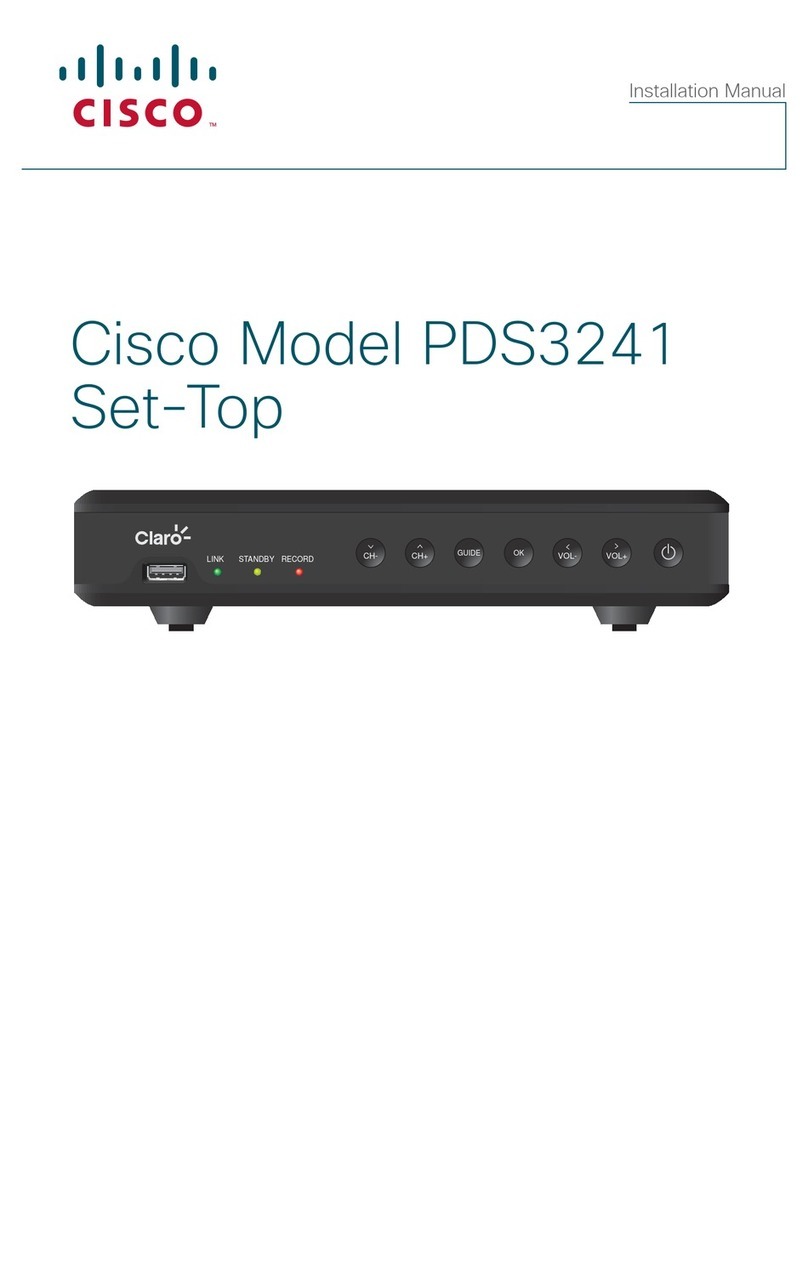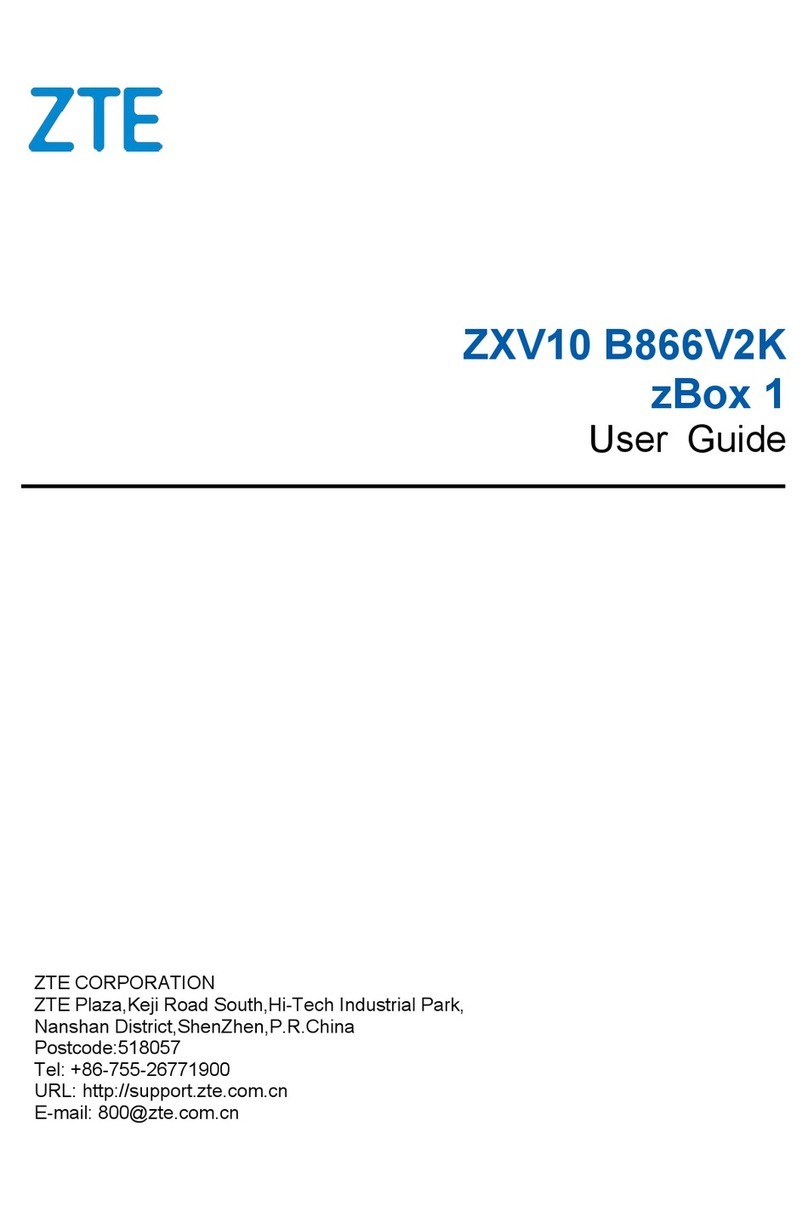Zenith HD-SAT520 User manual

1-3
CAUTION : DO NOT ATTEMPT TO MODIFY THIS PRODUCT IN ANY WAY,
NEVER PERFORM CUSTOMIZED INSTALLATIONS WITHOUT MANUFAC-
TURER’S APPROVAL. UNAUTHORIZED MODIFICATIONS WILL NOT ONLY
VOID THE WARRANTY, BUT MAY LEAD TO YOUR BEING LIABLE FOR ANY
RESULTING PROPERTY DAMAGE OR USER INJURY.
SERVICE WORK SHOULD BE PERFORMED ONLY AFTER YOU ARE
THOROUGHLY FAMILIAR WITH ALL OF THE FOLLOWING SAFETY
CHECKS AND SERVICING GUIDELINES. TO DO OTHERWISE,
INCREASES THE RISK OF POTENTIAL HAZARDS AND INJURY TO THE
USER.
WHILE SERVICING, USE AN ISOLATION TRANSFORMER FOR PROTEC-
TION FROM A.C. LINE SHOCK.
SAFETY CHECKS
AFTER THE ORIGINAL SERVICE PROBLEM HAS BEEN CORRCTED. A
CHECK SHOULD BE MADE OF THE FOLLOWING.
SUBJECT : FIRE & SHOCK HAZARD
1. BE SURE THAT ALL COMPONENTS ARE POSITIONED IN SUCH A WAY
AS TO AVOID POSSIBILITY OF ADJACENT COMPONENT SHORTS.
THIS IS ESPECIALLY IMPORTANT ON THOSE MODULES WHICH ARE
TRANSPORTED TO AND FROM THE REPAIR SHOP.
2. NEVER RELEASE A REPAIR UNLESS ALL PROTECTIVE DEVICES
SUCH AS INSULATORS, BARRIERS, COVERS, SHIELDS, STRAIN
RELIEFS, POWER SUPPLY CORDS, AND OTHER HARDWARE HAVE
BEEN REINSTALLED PER ORIGINAL DESIGN. BE SURE THAT THE
SAFETY PURPOSE OF THE POLARIZED LINE PLUG HAS NOT BEEN
DEFEATED.
3. SOLDERING MUST BE INSPECTED TO DISCOVER POSSIBLE COLD
SOLDER JOINTS, SOLDER SPLASHES OR SHARP SOLDER POINTS.
BE CERTAIN TO REMOVE ALL LOOSE FOREIGN PARTICLES.
4. CHECK FOR PHYSICAL EVIDENCE OF DAMAGE OR DETERIORATION
TO PARTS AND COMPONENTS. FOR FRAYED LEADS, DAMAGED
INSULATION (INCLUDING A.C. CORD). AND REPLACE IF NECESSARY
FOLLOW ORIGINAL LAYOUT, LEAD LENGTH AND DRESS.
5. NO LEAD OR COMPONENT SHOULD TOUCH A RECIVING TUBE OR
A RESISTOR RATED AT 1 WATT OR MORE. LEAD TENSION AROUND
PROTRUNING METAL SURFACES MUST BE AVOIDED.
6. ALL CRITICAL COMPONENTS SUCH AS FUSES, FLAMEPROOF
RESISTORS, CAPACITORS, ETC. MUST BE REPLACED WITH EXACT
FACTORY TYPES, DO NOT USE REPLACEMENT COMPONENTS
OTHER THAN THOSE SPECIFIED OR MAKE UNRECOMMENDED CIR-
CUIT MODIFICATIONS.
7. AFTER RE-ASSEMBLY OF THE SET ALWAYS PERFORM AN A.C.
LEAKAGE TEST ON ALL EXPOSED METALLIC PARTS OF THE CABI-
NET, (THE CHANNEL SELECTOR KNOB, ANTENNA TERMINALS. HAN-
DLE AND SCREWS) TO BE SURE THE SET IS SAFE TO OPERATE
WITHOUT DANGER OF ELECTRICAL SHOCK. DO NOT USE A LINE
ISOLATION TRANSFORMER DURING THIS TEST USE AN A.C. VOLT-
METER, HAVING 5000 OHMS PER VOLT OR MORE SENSITIVITY, IN
THE FOLLOWING MANNER; CONNECT A 1500 OHM 10 WATT RESIS-
TOR, PARALLELED BY A .15 MFD. 150.V A.C TYPE CAPACITOR
BETWEEN A KNOWN GOOD EARTH GROUND (WATER PIPE, CON-
DUIT, ETC.) AND THE EXPOSED METALLIC PARTS, ONE AT A TIME.
MEASURE THE A.C. VOLTAGE ACROSS THE COMBINATION OF 1500
OHM RESISTOR AND .15 MFD CAPACITOR. REVERSE THE A.C. PLUG
AND REPEAT A.C. VOLTAGE MEASUREMENTS FOR EACH EXPOSED
METALLIC PART. VOLTAGE MEASURED MUST NOT EXCEED 75
VOLTS R.M.S. THIS CORRESPONDS TO 0.5 MILLIAMP A.C ANY
VALUE EXCEEDING THIS LIMIT CONSTITUTES A POTENTIAL SHOCK
HAZARD AND MUST BE CORRECTED IMMEDIATELY.
SUBJECT: GRAPHIC SYMBOLS
THE LIGHTNING FLASH WITH APROWHEAD SYMBOL. WITHIN
AN EQUILATERAL TRIANGLE, IS INTENDED TO ALERT THE
SERVICE PERSONNEL TO THE PRESENCE OF UNINSULATED
“DANGEROUS VOLTAGE”THAT MAY BE OF SUFFICIENT MAG-
NITUDE TO CONSTITUTE A RISK OF ELECTRIC SHOCK.
THE EXCLAMATION POINT WITHIN AN EQUILATERAL TRIAN-
GLE IS INTENDED TO ALERT THE SERVICE PERSONNEL TO
THE PRESENCE OF IMPORTANT SAFETY INFORMATION IN
SERVICE LITERATURE.
SUBJECT : X-RADIATION
1. BE SURE PROCEDURES AND INSTRUCTIONS TO ALL SERVICE PER-
SONNEL COVER THE SUBJECT OF X-RADIATION. THE ONLY POTEN-
TIAL SOURCE OF X-RAYS IN CURRENT T.V. RECEIVERS IS THE PIC-
TURE TUBE. HOWEVER, THIS TUBE DOES NOT EMIT X-RAYS WHEN
THE HIGH VOLTAGE IS AT THE FACTORY SPECIFIED LEVEL. THE
PROPER VALUE IS GIVEN IN THE APPLICABLE SCHEMATIC. OPERA-
TION AT HIGHER VOLTAGES MAY CAUSE A FAILURE OF THE PIC-
TURE TUBE OR HIGH VOLTAGE SUPPLY AND, UNDER CERTAIN CIR-
CUMSTANCES, MAY PRODUCE RADIATION IN EXCESS OF DESIR-
ABLE LEVELS.
2. ONLY FACTORY SPECIFIED C.R.T. ANODE CONNECTORS MUST BE
USED. DEGAUSSING SHIELDS ALSO SERVE AS X-RAY SHIELD IN
COLOR SETS, ALWAYS RE-INSTALL THEM.
3. IT IS ESSNTIAL THAT SERVICE PERSONNEL HAVE AVAILABLE AN
ACCURATE AND RELIABLE HIGH VOLTAGE METER. THE CALIBRA
TION OF THE METER SHOULD BE CHECKED PERIODICALLY
AGAINST A REFERENCE STANDARD, SUCH AS THE ONE AVAILABLE
AT YOUR DISTRIBUTOR.
4. WHEN THE HIGH VOLTAGE CIRCUITRY IS OPERATING PROPERLY
THERE IS NO POSSIBILITY OF AN X-RADIATION PROBLEM. EVERY
TIME A COLOR CHASSIS IS SERVICED. THE BRIGHTNESS SHOULD
BE RUN UP AND DOWN WHILE MONITORING THE HIGH VOLTAGE
WITH A METER TO BE CERTAIN THAT THE HIGH VOLTAGE DOES
NOT EXCEED THE SPECIFIED VALUE AND THAT IT IS REGULATING
CORRECTLY, WE SUGGEST THAT YOU AND YOUR SERVICE ORGA-
NIZATION REVIEW TEST PROCEDURES SO THAT VOLTAGE REGU-
LATION IS ALWAYS CHECKED AS A STANDARD SERVICING PROCE-
DURE. AND THAT THE HIGH VOLTAGE READING BE RECORDER ON
EACH CUSTOMER’S INVOICE.
5. WHEN TROUBLESHOOTING AND MAKING TEST MEASUREMENTS IN
A PRODUCT WITH A PROBLEM OF EXCESSIVE HIGH VOLTAGE,
AVOID BEING UNNECESSARILY CLOSE TO THE PICTURE TUBE AND
THE HIGH VOLTAGE SUPPLY. DO NOT OPERATE THE PRODUCT
LONGER THAN IS NECESSARY TO LOCATE THE CAUSE OF EXCES
SIVE VOLTAGE.
6. REFER TO HV. B+ AND SHUTDOWN ADJUSTMENT PROCEDURES
DESCRIBED IN THE APPROPRIATE SCHEMATIC AND DIAGRAMS
(WHERE USED).
SUBJECT: IMPLOSION
1. ALL DIRECT VIEWED PICTURE TUBES ARE EQUIPPED WITH AN INTE
GRAL IMPLOSION PROTECTION SYSTEM, BUT CARE SHOULD BE
TAKEN TO AVOID DAMAGE DURING INSTALLATION, AVOID
SCRATCHING THE TUBE. IF SCRATCHED REPLACE IT.
2. USE ONLY RECOMMENDED FACTORY REPLACEMENT TUBES.
SUBJECT : TIPS ON PROPER INSTALLATION
1. NEVER INSTALL ANY PRODUCT IN A CLOSED-IN RECESS, CUBBY-
HOLE OR CLOSELY FITTING SHELF SPACE. OVER OR CLOSE TO
HEAT DUCT, OR IN THE PATH OF HEATED AIR FLOW.
2. AVOID CONDITIONS OF HIGH HUMIDITY SUCH AS: OUTDOOR PATIO
INSTALLATIONS WHERE DEW IS A FACTOR, NEAR STEAM RADIA-
TORS WHERE STEAM LEAKAGE IS A FACTOR, ETC.
3. AVOID PALCEMENT WHERE DRAPERIES MAY OBSTRUCT REAR
VENTING. THE CUSTOMER SHOULD ALSO AVOID THE USE OF DEC-
ORATIVE SCARVES OR OTHER COVERINGS WHICH MIGHT
OBSTRUCT VENTILATION.
4. WALL AND SHELF MOUNTED INSTALLATIONS USING A COMMER-
CIAL MOUNTING KIT. MUST FOLLOW THE FACTORY APPROVED
MOUNTING INSTRUCTIONS A PRODUCT MOUNTED TO A SHELF OR
PLATFORM MUST RETAIN ITS ORIGINAL FEET (OR THE EQUIVALENT
THICKNESS IN SPACERS) TO PROVIDE ADEQUATE AIR FLOW
ACROSS THE BOTTOM, BOLTS OR SCREWS USED FOR FASTENERS
MUST NOT TOUCH ANY PARTS OR WIRING. PERFORM LEAKAGE
TEST ON CUSTOMIZED INSTALLATIONS.
5. CAUTION CUSTOMERS AGAINST THE MOUNTING OF A PRODUCT ON
SLOPING SHELF OR A TILTED POSITION, UNLESS THE PRODUCT IS
PROPERLY SECURED.
6. A PRODUCT ON A ROLL-ABOUT CART SHOULD BE STABLE ON ITS
MOUNTING TO THE CART. CAUTION THE CUSTOMER ON THE HAZ-
ARDS OF TRYING TO ROLL A CART WITH SMALL CASTERS ACROSS
THRESHOLDS OR DEEP PILE CARPETS.
7. CAUTION CUSTOMERS AGAINST THE USE OF A CART OR STAND
WHICH HAS NOT BEEN LISTED BY UNDERWRITERS LABORATORIES,
INC. FOR USE WITH THEIR SPECIFIC MODEL OF TELEVISION
RECEIVER OR GENERICALLY APPROVED FOR USE WITH T.V.’S OF
THE SAME OR LARGER SCREEN SIZE.
8. CAUTION CUSTOMERS AGAINST THE USE OF EXTENSION CORDS,
EXPLAIN THAT A FOREST OF EXTENSIONS SPROUTING FROM A SIN-
GLE OUTLET CAN LEAD TO DISASTROUS CONSEQUENCES TO
HOME AND FAMILY.
PRODUCT SAFETY SERVICING GUIDELINES FOR VIDEO PRODUCTS
A.C. VOLTMETER
GOOD EARTH GROUND
SUCH AS THE WATER
PIPE. CONDUIT. ETC
PLACE THIS PROBE
ON EACH EXPOSED
METAL PART

1-4
SERVICING PRECAUTIONS
CAUTION : Before servicing the STB covered by this service
data and its supplements and addends, read and follow the
SAFETY PRECAUTIONS. NOTE : if unforeseen circum-
stances create conflict between the following servicing pre-
cautions and any of the safety precautions in this publica-
tions, always follow the safety precautions.
Remembers Safety First:
General Servicing Precautions
1. Always unplug the STB AC power cord from the AC
power source before:
(1) Removing or reinstalling any component, circuit board,
module, or any other assembly.
(2) Disconnection or reconnecting any internal electrical
plug or other electrical connection.
(3) Connecting a test substitute in parallel with an elec-
trolytic capacitor.
Caution : A wrong part substitution or incorrect
polarity installation of electrolytic capacitors may result
in an explosion hazard.
2. Do not spray chemicals on or near this STB or any of its
assemblies.
3. Unless specified otherwise in this service data, clean
electrical contacts by applying an appropriate contact
cleaning solution to the contacts with a pipe cleaner,
cotton-tipped swab, or comparable soft applicator.
Unless specified otherwise in this service data, lubrication
of contacts is not required.
4. Do not defeat any plug/socket B+ voltage interlocks with
whitch instruments covered by this service manual might
be equipped.
5. Do not apply AC power to this STB and/or any of its elec-
trical assemblies unless all solid-state device heat sinks
are cerrectly installed.
6. Always connect test instrument ground lead to the
appropriate ground before connection the test instrument
positive lead. Always remove the test instrument ground
lead last.
Insulation Checking Procedure
Disconnect the attachment plug from the AC outlet and turn
the power on. Connect an insulation resistance meter(500V)
to the blades of the attachment plug. The insulation resis-
tance between each blade of the attachment plug and acces-
sible conductive parts (Note 1) should be more than 1M-
ohm.
Note 1 : Accessible Conductive Parts including Metal pan-
els, Input terminals, Earphone jacks, etc.
Electrostatically Sensitive (ES) Devices
Some semiconductor (solid state) devices can be damaged
easily by static electricity. Such components commonly are
called Electrostatically Sensitive (ES) Devices. Examples of
typical ES devices are integrated circuits and some field
effect transistors and semiconductor chip components.
The following techniques should be used to help reduce the
incidence of component damage caused by static electricity.
1. Immediately before handling any semiconductor compo-
nent or semiconductor-equipped assembly, drain off any
electrostatic charge on your body by touching a known
earth ground. Alternatively, obtain and wear a commer-
cially available discharging wrist strap device, which
should be removed for potential shock reasons prior to
applying power to the unit under test.
2. After removing an electrical assembly equipped with ES
devices, place the assembly on a conductive surface such
as aluminum foil, to prevent electrostatic charge buildup or
exposure of the assembly.
3. Use only a grouned-tip soldering iron to solder or unsolder
ES devices.
4. Use only an anti-static solder removal device. Some
solder removal devices not classified a “anti-static”can
generate electrical charges sufficient to damage ES
devices.
5. Do not use freon-propelled chemicals. These can
generate electrical charge sufficient to damage ES
devices.
6. Do not remove a replacement ES device from its protec
tive package until immediately before you are ready to
install it. (Most replacement ES devices are packaged with
leads electrically shorted together by conductive foam,
aluminum foil, or comparable conductive material).
7. Immediately before removing the protective material from
the leads of a replacement ES device, touch the protective
material to the chassis or circuit assembly into which the
device will be installed.
Caution : Be sure no power is applied to the chassis or
circuit, and observe all other safety precautions.
8. Minimize bodily motions when handling unpackaged
replacement ES devices. (Normally harmless motion such
as the brushing together of your clothes fabric or the lifting
of your foot from a carpeted floor can generate static elec-
tricity sufficient to damage an ES device.)

2-2
EXPLODED VIEWS
1. Cabinet and Main Frame Section
463
280
260
A42
A49
A46
A44
250
320
463
463
463
463
463
457
465
466
452
A43
452
463
300
A
5
4
3
2
1
BCD

2-32-3
2.Packing Accessory Section
808
804
803
801
900
802
803
813 S-VIDEO CABLE
806 RF CABLE(2EA)
822 SMART CARD
823 TELEPHONE LINE
820 COMPONENT CABLE
PACKING SHEET
PACKING
BATTERY
REMOCON
BOX CARTONX
OWNER'S MANUAL
PACKING

3-5
ELECTRICAL TROUBLESHOOTING GUIDE
1. POWER(SMPS) CIRCUIT
NO
NO
NO
NO
NO
NO
NO
NO
NO
YES
YES
YES
YES
YES
YES
YES
YES
NO
YES
(1) No 3.8VA
Check or Replace
the D129, D130.
NO
YES
YES
(2) No 24VA (TO CAP, DRUM MOTOR)
NO
YES
YES
(3) No 30VA
NO 3.8VA.
Is the F101 normal?
Is the YH01
normal?
Is the BD101
normal?
Is Vcc(14~22V) sup-
plied to IC101 Pin3?
Are the D121/D122
normal?
Is there about 2.5V
at the IC103 Pin1?
Is the D129/D130
normal?
Is the D125
normal?
YES
Power in Main PCB is
short?
Replace the F101.
(Use the same Fuse)
Replace the
BD101.
Replace the TH01.
Is the D102
normal?
Check or Replace
the D102.
Replace the
D121/D122.
Replace the D106.
Replace the
D129/D130.
Replace the
D125.
Replace the
D124.
NO 30VA.
Is there about 30V
at the IC151 Pin1?
Check or Replace
the Q151.
Check or Replace
the D129/D130.
Is there about 30V
at the IC151 Pin1?
Check or Replace
the IC151.
Is the D124
normal?
NO 24VA.

NO 30VA.
Is the F103
normal?
Is there about 33V
at the IC152 Pin1?
Is the ZD152
normal?
NO
Replace the F103.
(Use the same Fuse)
NO
NO
NO
Check or Replace
the D126.
Check or Replace
the ZD152.
YES
YES
YES
Check or Replace
the ZD152.
(4) No 30VA
3-6

3-7
2. Audio Troubleshooting Flow
YES
YES
YES
YES
NO
NO
NO
YES
YES
YES
YES
NO
NO
NOYES
NOYES
Is 3.3V supplied to the pin 77 and
78 of IC701?
Is 27MHz Clock input into the pin
36 of IC701? Fig01
Is 33MHz Clock is output from the
pin 26 of IC701? Fig02
(1) NO ATSC Audio
Is 27MHz Clock is output from the
Pin 3 of IC603
Check R702, C707, C708
Is the pin 59 of IC701 is grounded?
Is 18.432MHz clock output from
the pin 67 of IC701? Fig05
Check R701, C703, C704
Is Data output from the pin 73 of
IC701? Fig06
Is 3.072MHz clock output from the
pin 63 of IC701? Fig07
Is 48kHz clock output from the pin
64 of IC701? Fig08
Check the surroundings of IC701
Check the Power Supply Part
Is pulse input into the pin 40 and
41 of IC701? Fig03, Fig04
Is Logic Low Input into the pin 1 of
IC711 and Logic High into the pin 1
of IC503 respectively?
Check the pin 56, 36 of
the IC201.
Check IC503, IC711 Check
IC500
Are pulses input into the pin 3, 6 of
IC503?
1.1 Check IC701 and Surroundings

3-8
Fig.01 Fig.02 Fig.03
Fig.04 Fig.05 Fig.06
Fig.07 Fig.08

3-9
Fig.09
YES
YES
YES
NO
YES
NO
YES
NO
NO
NO
Is data pulse input into the pin 6
of IC801?
Is 48kHz clock is input into the pin
4 of IC801?
Are analog audio output from the
Pin 28, 29 of IC801? Fig09 Check IC702 and surroundings
1.2 Check MSP4448G and Surroundings
Is 5V supplied to the pin 10, 16, 49,
63 of IC801? Check Power Supply Part
Is 8V supplied to the pin 31 of
IC801?
Is 10V is supplied to the pin of
IC805?
Is 18.432MHz Clock input into the
Pin 54, 55 of IC801? Check Power Supply Part
Check IC713
Check IC713
NO

3-10
NO
1.3 Check IC804 and Surroundings
YES
NO
1.4 Check Output Jack and Surroundings
Is analog audio signal output from
The pin 1, 7 of IC804? Check IC804 and surroundings
Is 9V supplied to the pin 8 of
IC804? Check Power Supply Part
Check Q803, Q804, Q805, Q806,
JA600 and their surroundings
(2) No DirecTV Audio
YES
YES
NO
NO
Is ATSC audio OK?
Check the pin 56, 36 of
the IC201.
Is pulse input into the pin 39, 40 of
IC503?
Check IC503, IC711 and their
Surroundings.
Check IC1950 and surroundings
Is Logic Low Input into the pin 1 of
IC711 and IC503?

3-11
NO
YES
YES
NO
YES
NO
(3) No NTSC Audio
Is SIF signal input into the pin 50
of IC801? Fig10
Check TU300
Is SIF signal input into the Base
of Q304?
Are ATSC & DirecTV Audio OK?
Check Q304
Is analog audio signal output from
the pin 17, 18 of IC801? Check IC801 and surrounding
Fig.10

3-12
NO
NO
NO
(4) No SPDIF Out for ATSC & DirecTV
Is SPDIF pulse output from the
pin 51 of IC701? Fig11
Is 5V supplied into the pin 2 of
JA702?
Check JA702 and surrounding
YES
YES
Check IC701 and surrounding
Is ATSC & DirecTV Audio OK?
YES
Is SPDIF pulse output from the
pin 4 of IC710?
YES
Check IC710 and surrounding
Check Power Supply Part
Fig.11

3-13
NO
NO
NO
NO
YES
YES
YES
YES
YES
YES NO
NO
YES
(5) No SPDIF for NTSC
Is data pulse output from the pin
5 of IC801? Check IC801
Is ATSC & DirecTV Audio OK?
Is 18.432MHz clock output from
the pin 57 of IC801? Fig12 Check IC801
Is ATSC & DirecTV SPDIF OK?
Is 18.432MHz clock output from
the pin 3 of IC713? Fig13
Check IC713
Is NTSC Audio OK?
Is Logic Low input into the pin 19
of IC713?
Is Logic Low input into the pin 64
of IC201?
Check IC201
Is analog audio output from the
pin 25, 26 of IC801? Check IC801

3-14
Fig.12 Fig.13

3-15
YES
YES
YES
NO
YES
NO
(6) No 3/4 RF Audio
Is ATSC & DirecTV Audio OK?
Is ATSC & DirecTV & NTSC SPDIF
OK?
Is analog audio output from the pin
18 of IC801? Check IC801
Is analog audio output from the
Emitter of Q802? Check Q802
Check TU301

3-16
3. DIRECTV FRONT PANEL Troubleshooting Flow
NO
NO
NO
NO
NO
(1) If front panel board is not working
Is the IC -28, -24, -21.5V power
supplied normally?
Does the clock #1 operate normally?
Does the signal #2 operate normally?
Check IC100(5) clock waveform
: See Fig.01
Check IC100(8) clock waveform
: See Fig.02
YES
YES
YES
Check Connector P101(3), P101(2),
P101(1) voltage : -28, -24, -21.5V
Does the signal #3 operate normally? Check IC100(42) clock waveform
: See Fig.03
YES
END
START
Is the IC 5V power
supplied normally?
YES
Check IC100(13), IC100(43), IR100(2)
voltage : 5V
Legend : IC100(5)
IC number
IC pin number

3-17
FIG.01
IC100 VFD Chip Clock
(about 460KHz)
FIG.02
IC100 VFD Control Clock Signal
FIG.03
IC100 VFD Chip Grid1 Pulse

3-18
4. DVI Troubleshooting Flow
END
DVI cable is pulg in ?
DVI ICON display?
480P picture right ?
START
YES
YES
YES
NO
NO
NO
NO
720P, 1080I picture right ?
YES
Connect DVI cable
(A)
Check IC404 pin57(IDCK+),pin2(DE),
pin4(HSYNC),pin5(VSYNC)
The IDCK_ clock shall be 27MHz.
Refer to Fig.1
Check IC404 pin57(IDCK+),pin2(DE),
pin4(HSYNC),pin5(VSYNC)
The IDCK_ clock shall be 74.25MHz.
Refer to Fig2, Fig3 and Fig4.
Fig.01 Fig.02 Fig.03
Fig.04

3-19
(A)
Color Space Switch is RGB side ?
IC404 pin 11 is high volt ?
The emitter of Q409 is high volt?
Change Switch to RGB side
Change the DVI chip
Use another DVI cable
or
Turn on the receiver monitor.
NO
NO
NO
YES
YES

3-20
5. CPU Troubleshooting Flow
END
Is power supplied normally?
Is each clock OK?
Is each reset OK at the time of
power-on reset?
Is each chip selection OK?
Is each I2C channel OK?
Start
(1) outline
Check Power : Refer to (A)
Check each clock : Refer to (B)
Check reset circuit : Refer to (C)
Check each chip selection :
Refer to (D)
Check each I2C channel :
Refer to (E)
YES
YES
YES
YES
YES
NO
NO
NO
NO
NO
Is each interrupt signal OK? Check each interrupt signal :
Refer to (F)
NO
Are messages output through
RS-232C port on PC terminal?
Check RS-232C circuit :
Refer to (G)
NO
YES
Other manuals for HD-SAT520
1
Table of contents
